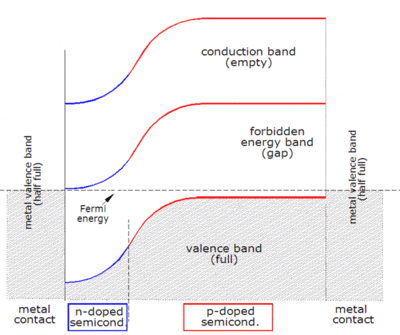Last week, we learned that the thermodynamic efficiency limit is the absolute maximum theoretically possible conversion efficiency of sunlight to electricity, which is about 86 percent. This is because when energy is transformed from one source to another, there is some energy loss in the process.
Today, I will talk about the concept of band gap energy. Just because it’s sunny outside doesn’t mean that it’s the right type of solar spectrum to generate electricity.
The band gap represents the energy difference between the conduction band and valence band. If that gap is not met, than solar energy cannot be converted into electricity. A simple way to explain is using the illustration of a water park. In the kids section of the water park, there is a gigantic water bucket on top of a structure. The kids are below waiting for it to fill up. When the bucket is filled, it tilts over and drenches the kids below. Using this as an illustration, if there isn’t enough photons with energy to fill up the bucket or in this case the band gap, the energy cannot be converted into electricity.
Phrased differently, in order to excite an electron in the solar cell, you need a photon with energy equal or higher than the band gap, which is the difference between the conduction band and the valence band, in order to for the energy to be absorbed. If a photon is less than the band gap, it doesn’t meet the threshold so no electricity will be generated. If you get a photon with energy higher than the energy gap, the best that you can do is equal to the band gap. Hence, the band gap is critical to understanding what is the minimum energy required to convert solar to electricity and the maximum allowable energy that can be generated.
Next week, I will discuss the solar spectrum. Not all sunshine is equal.
Don’t forget to subscribe to Climate Change with Scott Amyx on Amazon Alexa and give it a 5-star rating.


















